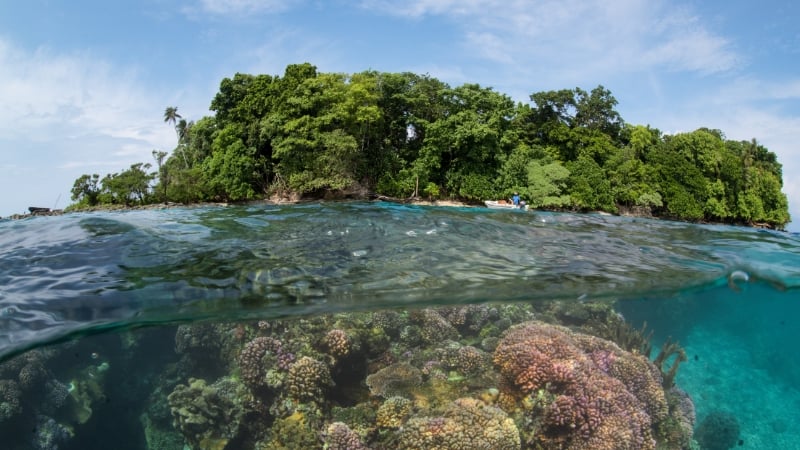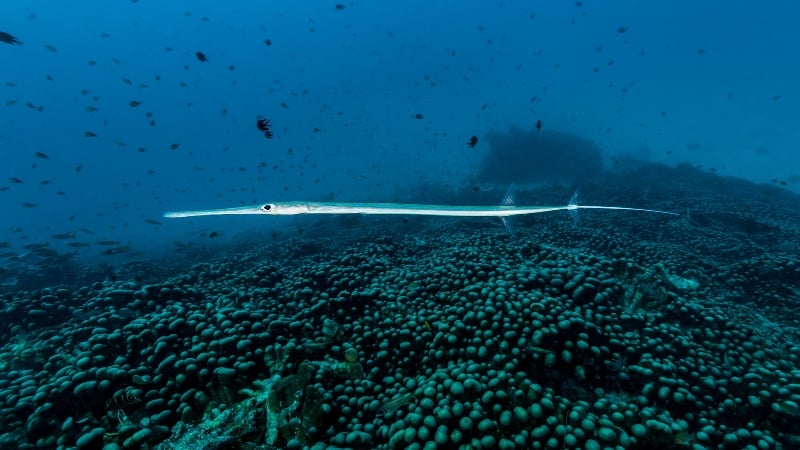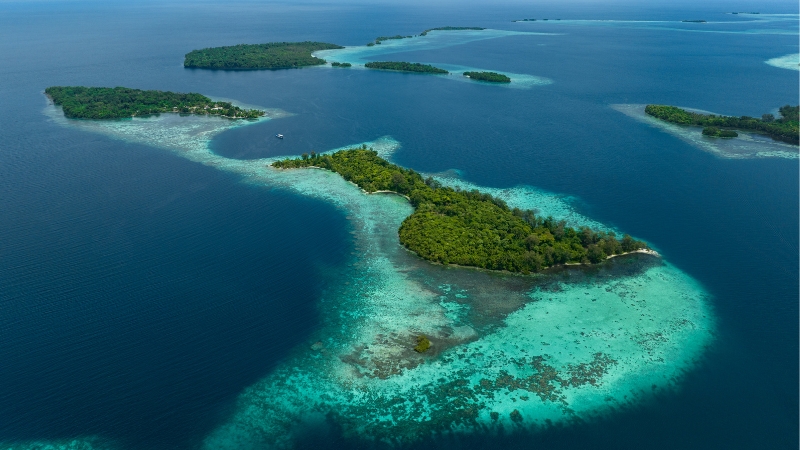Imagine a coral so massive that you can spot it from space! No, this isn’t a new sci-fi movie plot – it’s the real deal. Welcome to the Solomon Islands, where researchers stumbled upon a coral so large, it might just be the world’s largest individual coral colony! And get this – it’s probably been around for centuries!
Also read: Last Chance Tourism: These 8 Tourist Places May Disappear in the Future
A Coral the Size of Two Basketball Courts

Image credit: Maximilian Milz via Getty Images
First things first, this isn’t your average reef. Picture this: A giant coral sprawling across a whopping 34 metres wide and 32 metres long. That’s roughly the size of two basketball courts! To give you an idea of just how monumental this is, the last record-holder for the world’s largest coral was only 22 metres wide, in American Samoa. But this one? Well, it’s BIG, and it’s definitely stealing the show.
This isn’t just a giant clump of seaweed or coral. It’s a single organism made up of millions of tiny creatures called polyps. All of these polyps live together in harmony, creating a thriving communal ecosystem. So, yes – You could technically call this colossal being the largest living thing on the planet that isn’t a blue whale!
The World’s Oldest Survivor Coral
But wait, there’s more! Not only is this coral enormous, but it’s also ancient. Researchers believe it’s been alive for between 300 and 500 years. Imagine that – This single coral has survived centuries of global changes and major events (like COVID-19… and the World Wars… should I go on?). It’s like a coral grandparent who’s seen it all and is still going strong.
The Beautifully Resilient Pavona Clavus

Image credit: Ifish via Getty Images Signature
Now, let’s talk about this coral’s species: Pavona clavus. A bit of a mouthful, but don’t let the name fool you – This coral species is one tough cookie. Not only does it appear to be surviving the heat waves that have caused coral bleaching worldwide, but it also seems to be thriving in deeper, cooler waters. That’s a big win, considering the massive bleaching crisis that’s sweeping across the globe. Unfortunately, three-quarters of coral reefs have been affected by ocean heat in recent years.
It’s believed that this deep-water habitat may help the coral dodge the worst of the heat, but it’s also possible that Pavona clavus has some built-in genetic tolerance to high temperatures. Whatever the case, it’s proving to be a resilient survivor – A beacon of hope for marine conservation.
Why Should We Care?
So, why should you care about this giant coral that’s literally older than the founding of Singapore? Well, coral reefs play a massive role in the health of the ocean and the world at large. They help protect shorelines from storm surges, act as a sanctuary for marine life, and are crucial for commercial fishing industries. Plus, they’re a huge draw for tourism, contributing billions of dollars to local economies around the world.
However, coral reefs are increasingly under threat. This discovery serves as a stark reminder of how fragile our planet’s ecosystems are. This particular coral might be resilient, but the reefs that surround it are not all so lucky.
What’s Next for the Solomon Islands?

Image credit: Velvetfish via Getty Images
While the discovery of the world’s largest coral is a game-changer, there’s still so much more to learn about the marine life around the Solomon Islands. The waters around the island of Malaulalo remain largely unexplored, meaning that there could be even more hidden gems waiting to be discovered.
And while this mega coral certainly steals the spotlight, scientists are quick to point out that the real key to preserving ocean life is diversity. A single, massive colony might be impressive, but it’s a balanced, diverse ecosystem that truly thrives. The hope is that the excitement generated by this discovery will encourage more efforts to protect marine environments on a larger scale.
The Bottom Line
Whether you’re an ocean enthusiast, a marine conservationist, or just someone who loves exploring unique and awe-inspiring natural wonders, the discovery of the world’s largest coral is a big deal. It’s a reminder that even in the face of climate change and environmental degradation, there are still beautiful, resilient ecosystems out there – and with the right protections, they can survive for centuries to come.
So, next time you’re planning a tropical getaway or looking for an off-the-beaten-path adventure, consider the Solomon Islands! Not only are they home to stunning landscapes and rich culture, but now you can say you visited the place where the world’s largest coral lives!
Also read: The World’s Least-Visited Countries & Why You Should Go
Let’s hope it’s just one of many incredible discoveries to come!
Instagram featured image credit: ifish via Getty Images Signature






